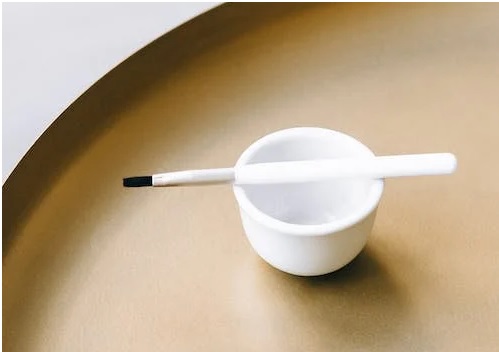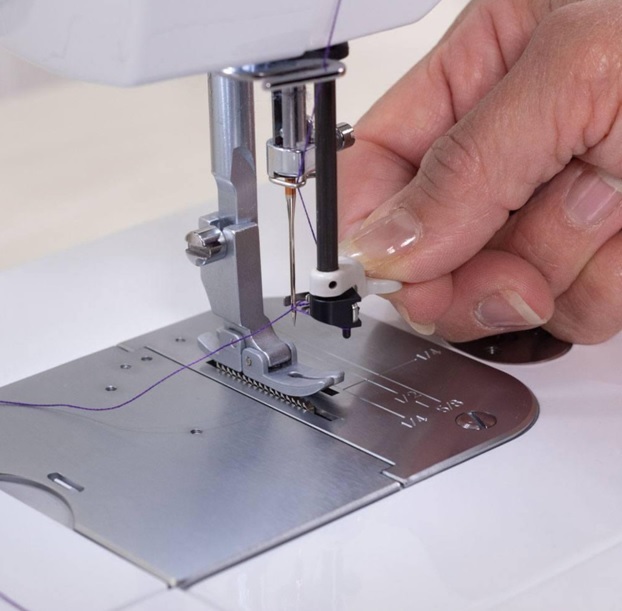Basic Maintenance for Baby Lock Sewing Machines
4th Mar 2024
Baby Lock sewing machines exhibit excellent overall durability and are built with quality components for long service lifespans. They are user friendly and models are available for both beginners and experienced seamsters and tailors.
But, like all machines, Baby Lock sewing machines need periodic cleaning and maintenance to keep humming along. This short guide will cover the basics, as well as when you should seek professional service.
How Often to Clean?
How often you need to clean your Baby Lock sewing machine will depend on how you use it, what you use it for, and what materials you work with. Heavy materials like denim and canvas, and high shedding materials like faux fur, will necessitate more frequent cleanings and service. If you sew daily and use the machine heavily, once per week (at least) is a good estimate. For casual users, once per month will suffice. Of course, if you experience a degradation in performance, clean (or service) the machine right away.
Cleaning the Bobbin Area
The first step in Baby Lock sewing machine maintenance is to clean the bobbin area.
First, you’ll want to unplug the machine (a must before performing any maintenance) and then remove the needle and thread. Then remove the gray plastic component of the throat plate by pulling it toward you, then remove the bobbin case.
Underneath there is a metal basket. Remove the lint; most users find a small brush helpful for this. Some Baby Lock sewing machines come with a combination tool that has a lint brush on one end and a seam ripper on the other, to be used for this express task.
Pay close attention to the pressure foot and around the light, too, as lint can accumulate in these areas.
If there’s lint deep within the bobbin area that you can’t access or dislodge with this brush, get a can of compressed air to blast it out, as this may prove a helpful alternative.

Repair or Replace the Bobbin Case
Since you have the bobbin case removed, now is a good time to inspect it for damage. There may be nicks, scratches, or gouges where the needle has contacted it. In some instances, there may even be holes through it.
If the damage is minimal, you may be able to buff it out before replacing the bobbin case. In the event of more serious damage or holes, replacing the whole bobbin case is the answer.
Then reassemble the bobbin case, reinsert the needle and thread, and replace the plastic throat plate component.
Oiling the Machine
Your Baby Lock sewing machine has a lot of moving parts that, like any other machine, need oil to work smoothly and efficiently, as well as to extend their serviceable lifespan. You wouldn’t think above driving your car 10,000 miles without changing the oil; your sewing machine needs the same love and attention.
Your specific Baby Lock sewing machine will come with an owner’s manual that likely recommends a certain type of oil to use, as well as where the machine needs to be oiled. Never use a substitute oil; only use what the manufacturer recommends.
Also, oil at the points prescribed in the manual, and never the tension discs, handwheel release, or rubber rings or belts. In the latter case, these synthetic components do not need to be oiled, and oiling them may actually cause premature degradation.
Motor and Electrical Care
Lubricate your Baby Lock machine’s electric motor according to manufacturer instructions. If the machine has sealed bearings, they will not need to be oiled. If the motor requires oiling, once to twice per year should be sufficient; follow manufacturer instructions and do not over oil, as this can ruin the motor.
Ensure that all electrical connections are tight, and inspect the power cord for damage. If it is damaged, tape it with electrical tape or take it to a service provider for replacement.
Professional Service for Baby Lock Sewing Machines
An accredited Baby Lock sewing machine service provider will perform maintenance on your machine that it is not easy or practical to do at home.
Professional service providers can remove the outer cover and render advanced service and oiling to the inner components, and also check the timing of the needle and shuttle to prevent skipped stitches, among other things.
While you may be able to provide most basic maintenance at home, it’s a good idea to have your Baby Lock sewing machine professionally serviced at least once per year, if not more frequently, depending on use.

Contact Us If You Have Questions About Baby Lock Sewing Machines
If you have questions before you buy a new Baby Lock sewing machine, or are curious about maintenance for your specific model, check out Baby Lock’s Machine and Software support page, which contains a wide range of useful reference materials. You can also contact us for additional assistance at 800-229-8889.



